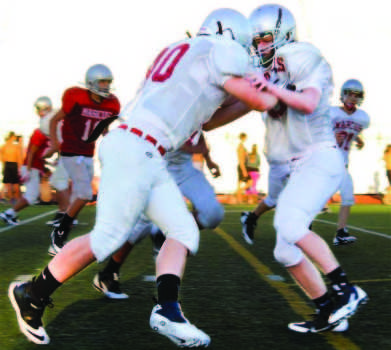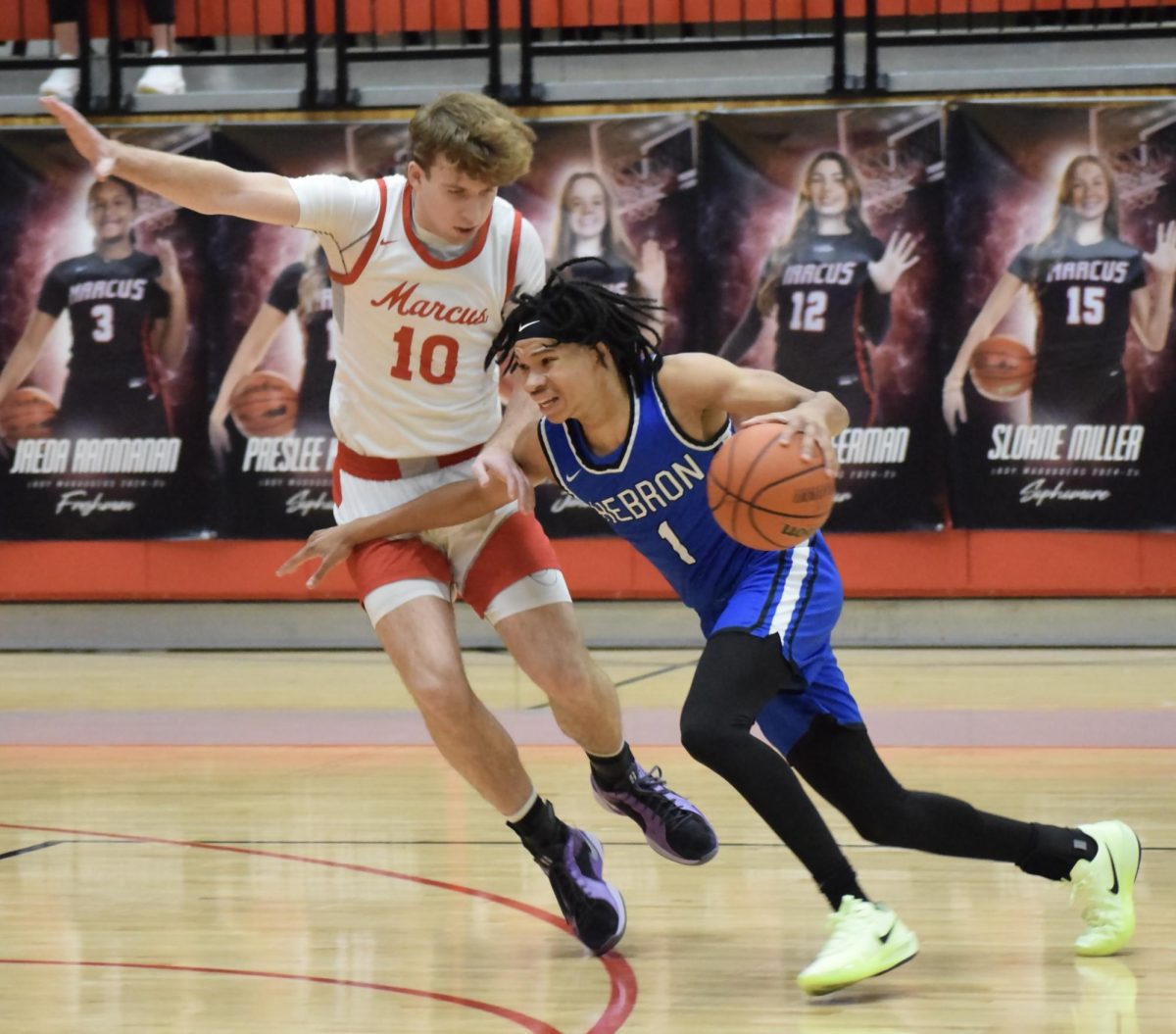
Bright lights shone down on Marauder Stadium. It was the last game of the season for the Downing Middle School A team. Current sophomore Mitch Cason dropped back to throw for one of the final plays, when an unblocked linebacker came out of nowhere. He knocked Cason to the turf, causing his head to smash into the ground.
“He just hit me, apparently with enough trauma to give me a concussion,” Cason said. “The worst part was the minute or two after. I was seeing double…just a major headache and pounding in my head and a lot of confusion.”
Dealing with a concussion can require an array of different tests. These tests are conducted on the field usually by a trainer and also if the student requires additional treatment at the hospital. They ask the student to perform a task such as counting or answering general questions. Cason said that after he suffered his concussion, coach Ronald Wilson went on the field and asked him what his name was and where he was at.
“Afterwards I couldn’t look at bright lights or screens, but that didn’t last too long,” Cason said.
The most common side effect of a concussion is a headache. However, concussions can also result in vomiting, drowsiness and slight memory loss. Donnelley said that students will try to jump right back in the game after receiving a concussion, saying it is only a headache. This then puts the athletes at a risk for further injuring themselves.
Concussions in football are not uncommon, but have recently come into the public eye as a major problem. Recently the NFL has made a $765 million settlement to the over 4,500 players who claim to have dementia, depression and even alzheimer’s due to head injuries sustained while playing football. These players say that both the NFL and helmet companies did not properly warn them about the dangers of permanent brain injury.
Players that get concussions risk permanent brain injuries later in life, although they may not show symptoms at first. These head injuries start on the middle school level if not earlier. Now there’s more focus on concussions at the high school level.
“The attention now being received on concussions has been a blessing at this level.” Ortmeier said.
Two new rules recently enacted this year have been created to help prevent injuries, specifically concussions. One states that if a player’s helmet comes off in the play, the player must sit out for at least one play to be evaluated. The second has caused a bit of controversy in the football community. The new “targeting” penalty will result in a 15 yard penalty, as well as the ejection of the player who was penalized. Targeting is defined as a player intentionally contacting another defenseless player above the shoulders.
This rule has had mixed reactions amongst the sports world. Some say that it takes away from the true nature of football while others agree it is a helpful precaution.
“Any rule that talks about leading with the head or trying to eliminate the head from the first point of contact is a good rule,” head trainer, David “Doc” Ortmeier said.
At the school, concussions are common during the football season. According to Ortmeier, there is one concussion for every two weeks during the regular season. That adds up to at least 10 concussions every season. However, all other sports combined, such as soccer or ultimate frisbee, average 15 concussions a year.
While football causes an array of different injuries, concussions are given a higher priority by all the trainers of the school because they are brain injuries and run the risk of permanent damage. One of the difficulties about this type of injury is that most players recover fairly quickly and after one concussion, they may appear fine. However, if more concussions are received, players run the risk of permanent brain damage.
If the brain is not given enough time to heal, then the player can easily receive another concussion. Concussion victims will not get enough time to heal, so the next time they hit their head a second concussion is more likely.
“We need to be patient with athletes,” Ortmeier said. “We need to reiterate that concussions take time to heal.”
Cason’s concussion would be classed as moderate since his symptoms lasted for more than 15 minutes but he did not lose consciousness. Concussions are ranked as either mild, moderate or severe. A minor concussion having symptoms lasting only 15 minutes, while a severe concussion will cause a full loss of consciousness and symptoms lasting for more than an hour.
“The day before was Halloween I think, and I didn’t remember that.” Cason said. “It didn’t take long to recover, it was just a mild concussion.”
These rules have been put into place due to the backlash of former football players claiming injuries from the game, and now the high school is attempting to keep its players safer by implementing the same rules.
“We’re taking our time and letting athletes recover,” Ortmeier said. “There’s more of a long term concern now and it’s being recognized now.”







